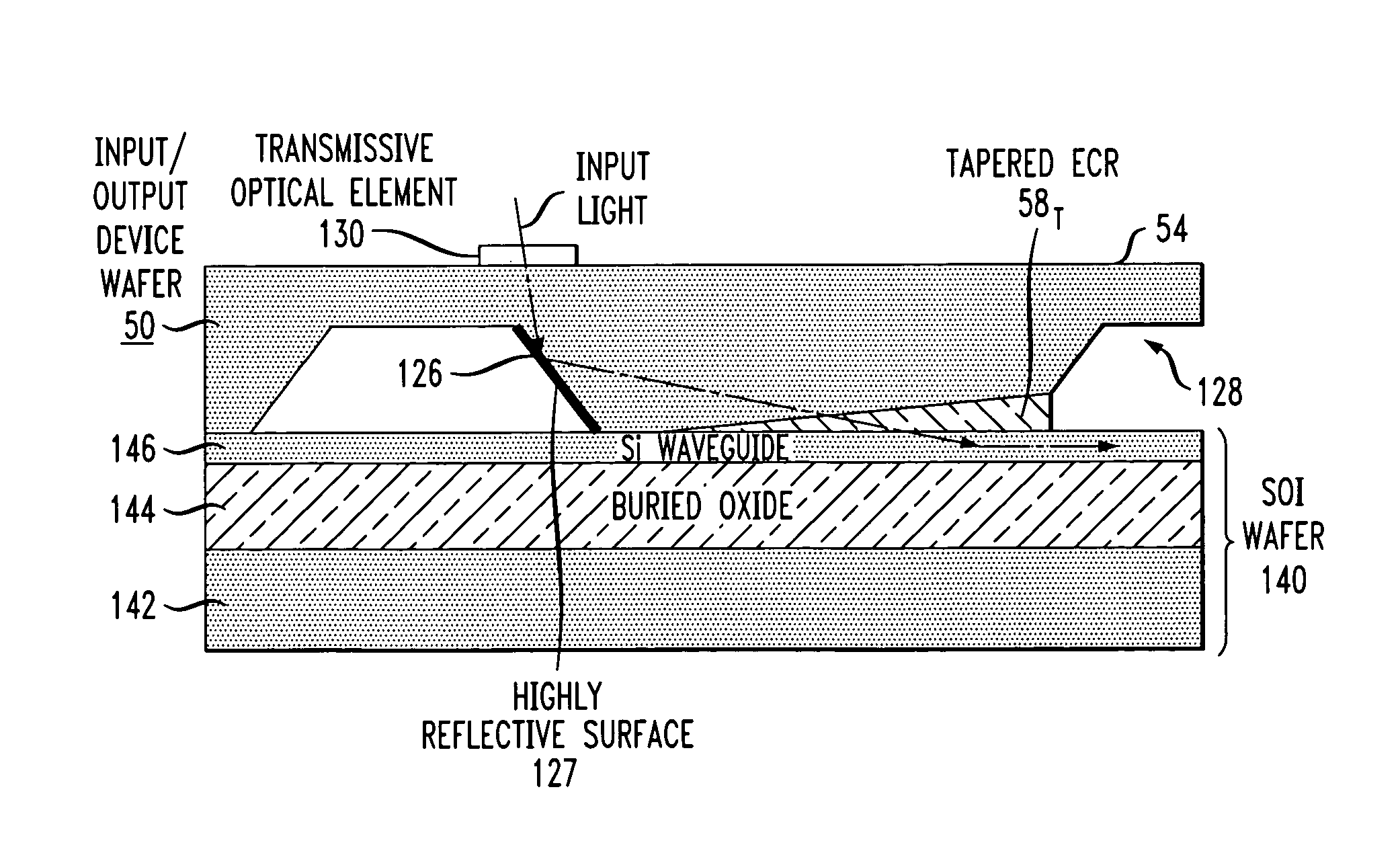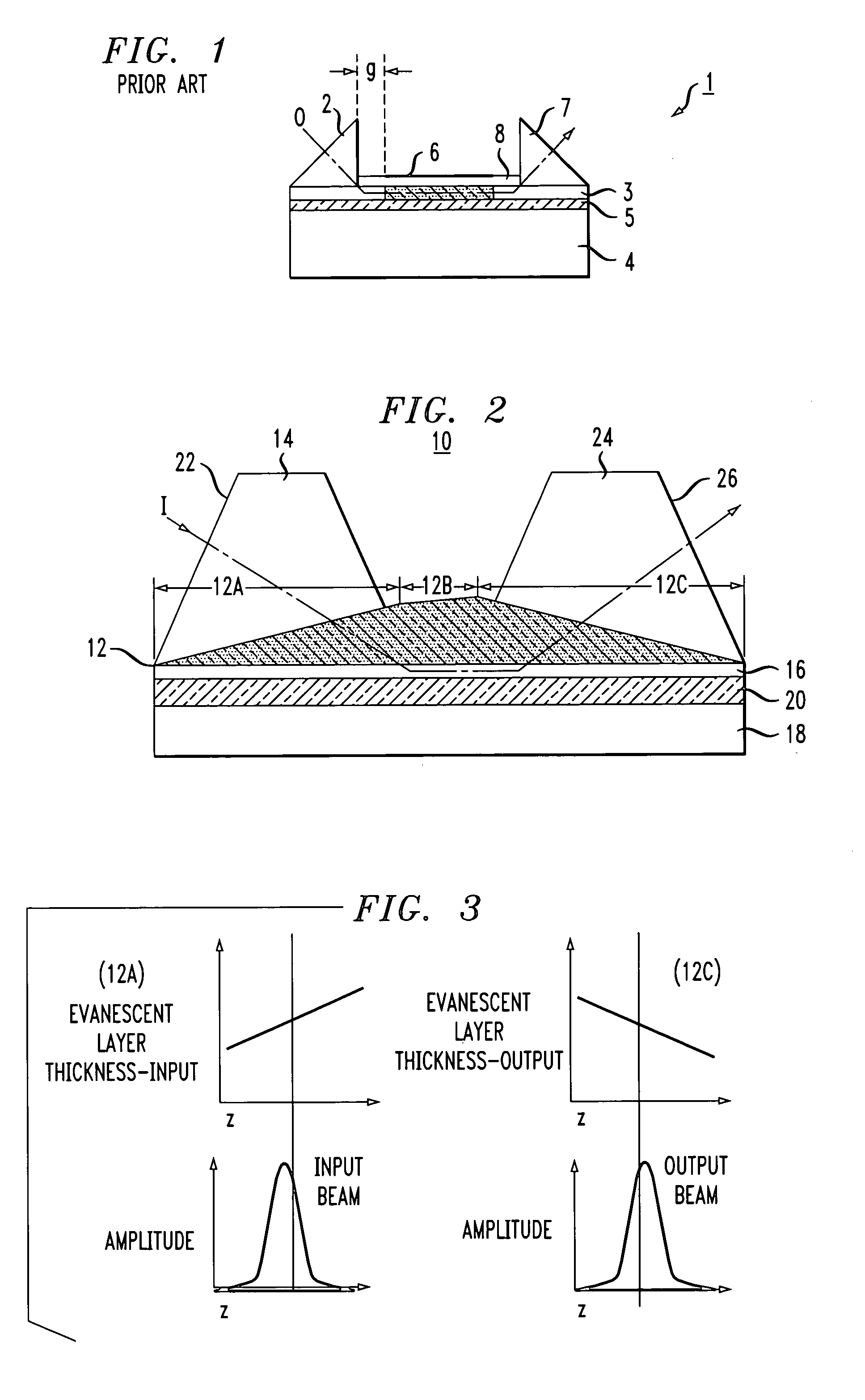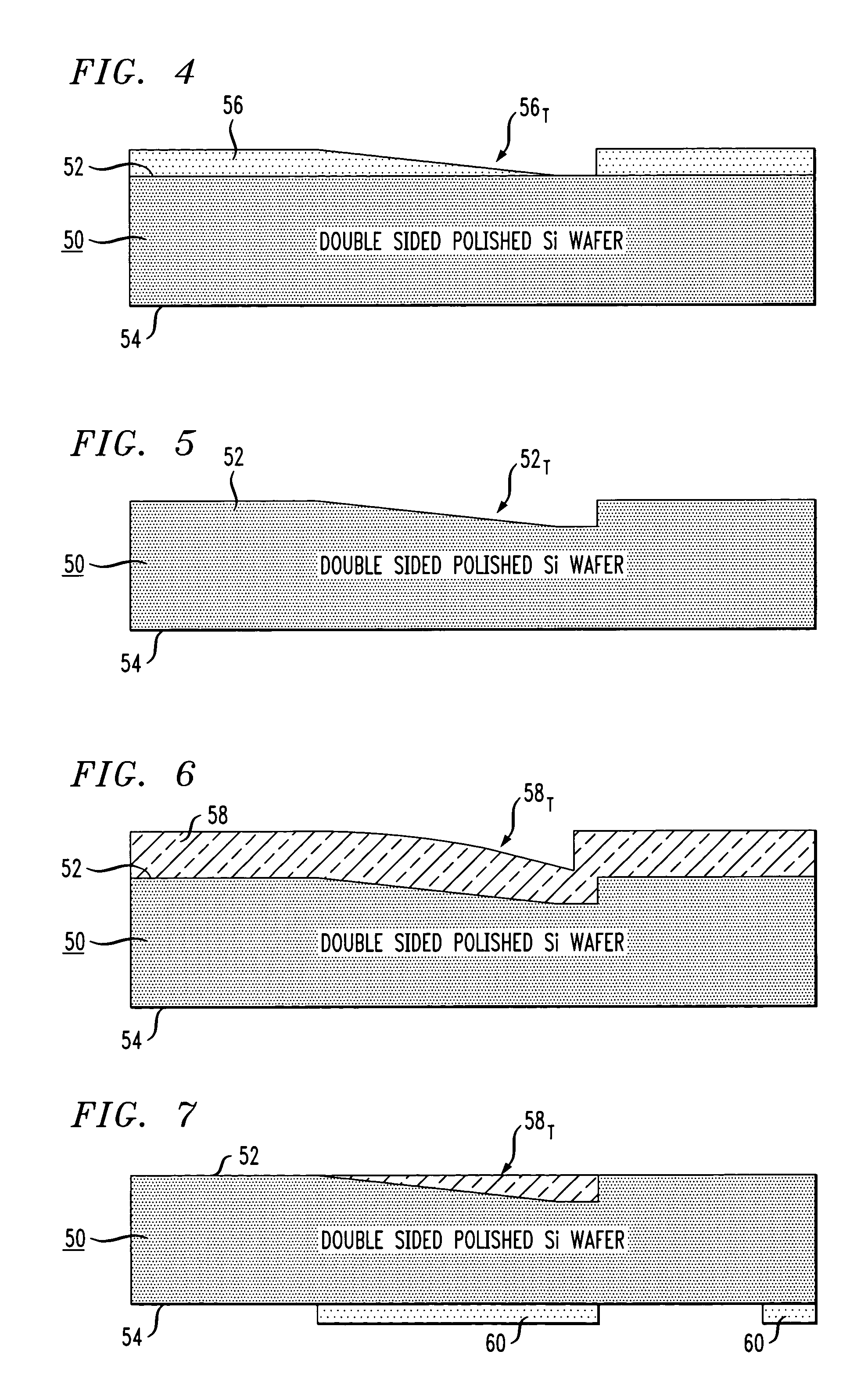Tapered structure for providing coupling between external optical device and planar optical waveguide and method of forming the same
a tapered coupling and external optical device technology, applied in the direction of optical waveguide light guide, instruments, optics, etc., can solve the problems of inability to monolithically integrate light sources with the remaining components of the opto-electronic platform, inability to use edge coupling techniques with relatively thin, sub-micron dimensioned silicon waveguides, and inability to achieve dimensional accuracy and slope control
- Summary
- Abstract
- Description
- Claims
- Application Information
AI Technical Summary
Benefits of technology
Problems solved by technology
Method used
Image
Examples
Embodiment Construction
[0027]FIG. 2 illustrates, in a cut-away partial view, an exemplary arrangement 10 of the present invention utilizing a tapered evanescent coupling region 12 disposed between an external optical coupling element 14 (in this case, a prism) and a relatively thin silicon optical waveguide layer 16. In the particular embodiment of FIG. 2, silicon waveguide layer 16 is formed as part of an SOI structure, the SOI structure further comprising a silicon substrate 18 and buried oxide layer 20. As shown in FIG. 2, buried oxide layer 20 is disposed between the relatively thin upper silicon optical waveguide layer 16 and silicon substrate 18. In the utilization of arrangement 10, a light beam I is introduced from an external source (not shown) and impinges an input coupling facet 22 of input prism 14. The light beam is thereafter refracted at the proper angle through prism 14, passes through tapered evanescent coupling region 12 and enters silicon optical waveguide layer 16.
[0028] In order for ...
PUM
 Login to View More
Login to View More Abstract
Description
Claims
Application Information
 Login to View More
Login to View More - R&D
- Intellectual Property
- Life Sciences
- Materials
- Tech Scout
- Unparalleled Data Quality
- Higher Quality Content
- 60% Fewer Hallucinations
Browse by: Latest US Patents, China's latest patents, Technical Efficacy Thesaurus, Application Domain, Technology Topic, Popular Technical Reports.
© 2025 PatSnap. All rights reserved.Legal|Privacy policy|Modern Slavery Act Transparency Statement|Sitemap|About US| Contact US: help@patsnap.com



